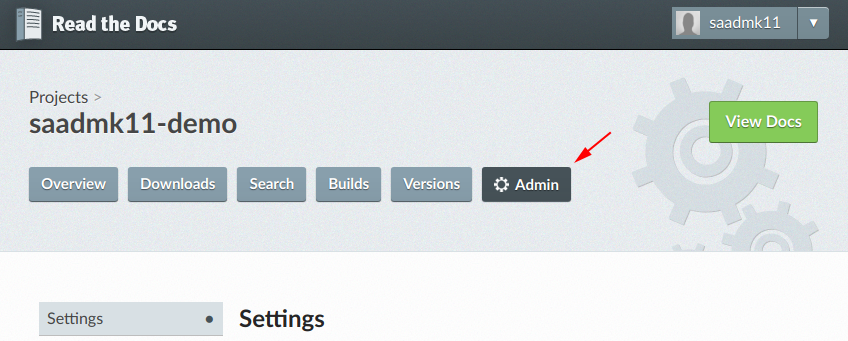Importing Your Documentation¶
To import a public documentation repository, visit your Read the Docs dashboard and click Import. For private repositories, please use Read the Docs for Business.
If you have connected your Read the Docs account to GitHub, Bitbucket, or GitLab, you will see a list of your repositories that we are able to import. To import one of these projects, just click the import icon next to the repository you'd like to import. This will bring up a form that is already filled with your project's information. Feel free to edit any of these properties, and then click Next to build your documentation.
Manually import your docs¶
If you do not have a connected account, you will need to select Import Manually and enter the information for your repository yourself. You will also need to manually configure the webhook for your repository as well. When importing your project, you will be asked for the repository URL, along with some other information for your new project. The URL is normally the URL or path name you'd use to checkout, clone, or branch your repository. Some examples:
- Git:
https://github.com/ericholscher/django-kong.git - Mercurial:
https://bitbucket.org/ianb/pip - Subversion:
http://varnish-cache.org/svn/trunk - Bazaar:
lp:pasta
Add an optional homepage URL and some tags, and then click Next.
Once your project is created, you'll need to manually configure the repository webhook if you would like to have new changes trigger builds for your project on Read the Docs. Go to your project's Admin > Integrations page to configure a new webhook, or see our steps for webhook creation for more information on this process.
Building your documentation¶
Within a few seconds of completing the import process, your code will automatically be fetched from your public repository, and the documentation will be built. Check out our ビルド処理 page to learn more about how Read the Docs builds your docs, and to troubleshoot any issues that arise.
Some documentation projects require additional configuration to build
such as specifying a certain version of Python or installing additional dependencies.
You can configure these settings in a readthedocs.yml file.
See our Configuration File docs for more details.
It is also important to note that the default version of Sphinx is v1.8.5. If
chosing to build your documentation other than this, it must be specified in a
requirements.txt file.
Read the Docs will host multiple versions of your code. You can read more about how to use this well on our Versions page.
If you have any more trouble, don't hesitate to reach out to us. The 支援 page has more information on getting in touch.

